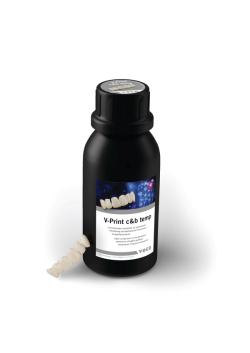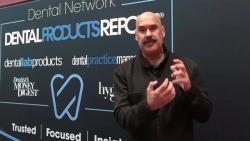- About Us
- Advertise
- Editorial
- Contact Us
- Terms and Conditions
- Privacy Policy
- Do Not Sell My Personal Information
© 2025 MJH Life Sciences™ and Dental Products Report. All rights reserved.
Tag-Team Implant Planning: How to Work with Your Clients to Plan the Best Implant Restorations
Implant placement in available bone was the standard for planning in the past. But what happens to placement optimization when you add the desired prosthetic into consideration? Our experts say the answer is many great things.
Tag teams are not usually what one pictures in a dental office. Reserved for the rowdier environs of a wrestling ring, tag teams usually involve wrestlers bouncing off each other to improve the match outcome. However, when it comes to tag-team implant planning, it is helpful to picture dental professionals bouncing ideas off each other to improve the implant restoration outcome instead.
A movement exists to change the existing implant planning process to allow for collaborations between oral surgeons, restorative dentists, and dental laboratories to improve final prosthetic outcomes. Today we look at the benefits of labs "tagging in" to implant planning earlier, how to make that work with your clients and their patients, and what technology can help.
The Benefits of Tagging In Earlier
Historically, the bone available for implant insertion drove the position and number of implants. These factors also affect the final prosthesis design and limit what prosthesis is possible in many cases.1
However, a shift is happening in implant dentistry. Instead of making implant placement decisions based on bone availability alone, some research indicates that starting with a comprehensive evaluation of the final prosthetic options for treatment should be included in those decisions.1
Matt Vrhovac, Senior Guided Surgery Specialist for NavaGation Precision Guidance, says that what their team calls Crown-Down Planning was the one missing link in the past.
“By treatment planning these cases on the front end with the final prosthesis in mind, we are not left with unnecessary and unexpected challenges on the back end when it is time to restore,” Vrhovac says.
“The alternative to that is the old approach,” André Grace, CDT, Director of NavaGation Precision Guidance and Organizational Development Office at Absolute Dental Services, Inc., says, “which would have been starting with the implant placement first without any idea of what the final result is going to be. Leaving the restorative phase of these cases compensating for that lack of preparation in the beginning.”
“When we first started, it was because we were tired of getting substandard work to try to put high-quality prosthetics on, and it just doesn’t work,” Vrhovac adds. “At the end of the day, it ended up being our and the restorative doctor’s responsibility to fix it.”
There are numerous benefits to end-to-end collaboration on implant cases. By allowing the team—the specialist, restorative dentist, and the lab—to plan the case from the desired prosthetic standpoint rather than designing the prosthetic around the technical limitations based on the implant placement, the cases have better outcomes.1
The Journal of International Society of Preventive & Community Dentistry suggests that these collaborations occur immediately following the initial consultation, which gathers the diagnostic information necessary. Having collaborative-treatment planning at this point presents an opportunity for the team to share the diagnostics and discuss what is bothering the patient, what the patient would like to see afterward, the patient's medical history, and current medical and dental situation. Including this information in the overall planning discussion allows the collaborators to formulate a detailed plan.1
Indraneel Kanaglekar, Senior Vice President, and President of Global Dental at ZimVie, a global life sciences firm, agrees that the Tag Team Approach to dental implant cases benefits the patient experience and, particularly, how they feel about the outcome.
"A lot of times, a specialist might be an excellent implant pacer, but not fully aware of the many innovative options available in prosthetic planning,” Kanaglekar says. “If you create a Tag Team Approach, you likely have a much better esthetic outcome at the end of the implant process."
In addition, the collaboration of a Tag Team Approach to implant planning improves efficiency and logistics, Kanaglekar says.
"You may have less to worry about, such as remakes or comebacks and the crown not fitting," Kanaglekar says.
David Turpin, the fourth-generation owner of Spartan Dental Lab, agrees that early collaboration alleviates setbacks for the labs when restoring, particularly regarding full arch restoration and more extensive prosthetics. Collaboration is essential, he says, because the dental team can create a predictable environment, which allows delivery of the prosthetic to go smoothly.
"Too many times implants would be placed without the final prosthetic taken into consideration. This causes many challenges later on the lab front,” Turpin says.
Miles Schuck, Head of Implant Surgery for Dandy Labs, adds that using treatment planning and surgical guides provides a significant benefit to doctors through increased predictability and accuracy. Predictable implant placement reduces appointment time and accurate placement increases the success rate of the final restoration 6 months later. Early collaboration also allows dentists to accurately place temporary provisionals like Essix retainers or temporary implant crowns, or even digitally manufactured custom healing abutments, which Schuck says are growing in popularity.
The lab benefits, too, Schuck explains. Utilizing surgical guides unlocks more predictable surgeries. For general practitioners (GPs) new to implant surgery we see more confidence in collaborating with the lab and doing guided placement.
"We can make it a much more seamless process and support the doctor and the patient by minimizing appointments and increasing cohesion there," Schuck says. "The first thing we start with is a design of the ideal final restoration."
In addition, the process is seamless. The guides are 3D printed, and the technician uses 1 of the various planning software available. Schuck says providing this service is an attractive new offering for the lab's clients.
"It allows you to capture the full scope of a patient’s implant experience rather than just the surgery or just the restorative," Schuck says.
"Seeing the full digital story of the patient on the lab side means we can create a more predictable restorativeproduct for our dentists." Andrew Bukuras, Senior Product Marketing Manager for Dandy, says. “Utilizing scan bodies in the digital workflow is a huge step forward in accuracy for dentists used to closed or open tray techniques. It’s precise, easier, and much more comfortable for the patient.”
How to Make Working Together Work Well
Schuck says the first thing a lab can do to make this process work for them is to find lab technicians wanting to take on a new skill set. Ideally, these technicians are familiar with the final implant restorations and comfortable speaking to doctors.
"It's a high-touch and personal experience," Schuck says of the Tag-Team Approach to implant cases. "Each plan is reviewed live with the doctor or sent via video recording, so you develop strong relationships with practices.
In addition, Bukuras says, “Doctors who want the end-to-end control over their implant’s workflow are finding success in the tag team approach. We are seeing a rise in GPs who see the value in placing their own implants in-practice. This is where the value is fully realized.”
Also, it might require educating doctors. Bukuras suggests helping practices up-level their understanding of digital implant workflows through education, easy-modes of digital communication, and hands-on support from experienced clinical professionals.
"Most labs aren't set up for that today," Bukuras says. "Dandy is.”
Turpin leveraged his relationships with the implant companies to get into the Tag Team Approach. His implant reps had relationships with surgeons that wanted to collaborate with labs, so the sales representative suggested Turpin while talking to the surgeon. Turpin's expertise regarding digital workflow for full arch cases has been popular with surgeons and restorative dentists alike.
"Everybody's all about doing these cases digitally and how technology helps reduce appointments," Turpin says. “My reps asked me if I know anyone who can do these cases digitally and I knew how, so that’s how I got into it. After that, I saw the huge need for the team approach on full-arch cases and decided to talk about it more with clients who were doing or were interested in starting to do these types of cases.”
In cases where the restorative doctor and a surgeon are involved, Vrhovac says the restorative doctor must be involved from the beginning whenever possible to ensure the lab has buy-in on the wax-up and the implant position. The restorative dentist signing off is essential because it takes the onus off the surgeon and lab and facilitates what Vrhovac describes as multi-disciplined treatment planning.
“You’re incorporating more than 1 aspect of the entire treatment; you’re incorporating the restorative, the lab, and the surgical,” Vrhovac says.
“When you are a lab focused on the pre-and post-surgical aspect of the case, dealing with both sides, we must keep it all in mind. That’s why we need to have all parties involved in the process from the beginning,” Grace explains. “It saves us a lot of work on the back end.”
Also, having everyone involved is essential to ensure that labs don’t take too much responsibility in the treatment planning. Vrhovac says that with their team that understands both the surgical and restorative process, they have to know where the line is between making a recommendation for the treatment planning and taking over the treatment planning. He explains that labs getting into treatment planning like this have to know where their job starts and stops, which can be difficult in these relationships.
“That’s where a lot of labs make a mistake. They take too much of the onus,” Vrhovac says.
“We are the bridge between the 2, but we don’t replace the restorative doctors,” Grace says. “It’s an ecosystem we are creating here of transferring records, communicating the outcome and challenges in the front-end stage all the way through to the end stage of restoring the case, keeping in mind the patient and restorative doctors’ expectations. So, our job as a lab is to create that ecosystem between the restorative doctor, surgeon, patient, and the lab and making sure there is a smooth, predictable transition from the surgical to the restorative phase of the case.”
“You have to allow the surgeon and the restorative doctor to make that call,” Vrhovac says. “Because, at the end of the day, it’s their plan.”
The Technology That Helps the Process, Too
Technology is critical when it comes to making the collaborative process easier for everyone. However, it is essential to understand the clinician's system before choosing which software to design the prosthetic. A study published in January 2022 that analyzed several software systems concluded that this information is essential because not every software supports every implant system.2
In addition, the study concluded that:2
- All systems could import a virtual prosthetic setup.
- All systems displayed 3D reconstructions or 2D cross-sections with different orientations that allow for virtual implant placement; users can mark the inferior alveolar nerve, allowing for the minimum distance between the nerve and the planned implant placement.
- No system provides individual abutment design tools; therefore, stock abutments are the option for implant planning.
- Two systems, DentalWings CoDiagnostiX™ and 3Shape's Implant Studio, provided a way for individual virtual prosthetic setups.
- Four systems, Dentsply's Simplant Pro™, Swissmedia's Smop™, CoDiagnostiX and Implant Studio, provided a setup for standardized teeth.
- NobelClinician™ works with conventional setups only.
- A virtual articulator was only allowed by 3Shape's Implant Studio.
- Software systems that had more than 50 implant systems in the library were CoDiagnostiX, Simplant Pro, and Implant Studio, and Smop had 33; Nobel Clinician had 4.
- Increasing compatibility with universal import formats, like face scans or scanner-specific formats that include color information, would simplify using the systems.
Please click here to read the open-access study on prosthetic setup and virtual implant planning.
Using digital tools in the Tag Team Approach also enables precision-based surgery, which enhances the clinical performance of the restoration, Kanaglekar says, adding that ZimVie is always looking for ways to create better value for labs. However, it starts with adopting a Tag Team Approach to enable prosthetic-driven implant planning that leverages the precision of guided surgery. Building awareness about what is possible for collaboration using these tools is a significant part of this effort.
For example, ZimVie's RealGUIDE™ Software Suite offers an end-to-end solution for implant planning for the team. The cloud-based software and app also mean collaborators can access the case from any device without purchasing multiple licenses. Moreover, the software provides a free PLAN module that allows the dentist and specialist to use the design tools without investing in the lab's software. In addition, ZimVie also offers Implant Concierge™, an on-demand virtual Treatment Plan Coordinator™ that provides treatment planning and guided surgery solutions for labs that need to outsource the case because of inexperience or operational constraints.
"If they want to get into the game without having to invest money, but still maintain the relationships with their restorative dentist and surgeon, an easy way would be to leverage our service, Implant Concierge on the back end," Kanaglekar explains.
Schuck likes coDiagnostiX® 10 software for planning implant locations. Lab technicians can do the wax-ups of the finals in there and things on the restorative side. Schuck also likes 3Shape Dental System dental CAD design software for designing more significant finals, which facilitates efficiency in their workflow. For example, if Dandy is fabricating an overdenture or an all-on-X case, they can designthe restorative in 3Shape and then import that design into coDiagnostiX to plan the best implant locations.
"It involves tight coordination between different departments where the implant surgery team is working with the digital denture team to go back and forth then and work on the best possible final denture to plan the implant locations," Schuck says. "And the beauty of this system is we'll use the same denture design to fabricate the immediate denture. Then, the doctor gets a guide and the denture based on that exact same design, and they get it all in 1 package. So, it's a pretty attractive offering for doctors as well."
When the lab has all the clinical information, including the final restoration the doctor wants, this streamlines the workflow, and we can have a plan ready for review in a couple of days. Bukuras explains that the ability to transfer clinically significant information in an effortless experience for doctors is vital.
Using the CBCT from the consultation and the design mock up, Turpin uses Dentsply's Simplant ™ implant planning services and software to make a recommendation for implant placement. Then, he meets with the surgeon and restorative dentist in person or via video conference to review everything and get approval. The surgeon may make changes to the placement and has to sign off, then the file is sent to the surgeon to print.
"That way, everyone is together at the same time, and we are not having multiple meetings," Turpin explains. "We go through our design and plan, so the team knows what to expect on surgery day. This presentation is then given to the patient.”
"And" Turpin continues, laughing as he explains how he tells the team in these meetings, "I'll deliver on my end if everything's good."
“Having the right planning software is key in all of this, and many are out there. But having the right one that accommodates what you are trying to do is essential. For example, if you are planning single-tooth implants all day long, plenty of software can accommodate that, but if you’re trying to work in the full-arch arena, there are only 2, maybe 3, that will work for that,” Vrhovac says. “So, you have to look at your end goal and custom tailor the technology based on what you’re trying to achieve.”
In addition, the technology used to get patient records is essential. For example, the edentulism of the patient can dictate what records are needed preemptively to plan a case properly, Vrhovac says.
“It’s also good to be very versatile and have different types of software and equipment because many doctors coming into the space want suggestions of what to get for a scanner and software. They want to make sure that the lab they’re working with can accept it,” Grace says. “Of course, we have our preferences, and doctors have their preferences. We stay unbiased in all of that. But we do need to have the ability to accomplish anything no matter what they have. We have software we hardly use, but we keep it because we have the 1 office that just got into the space, and that’s what they have.”
In addition, Grace also uses an assortment of third-party software that facilitates the collaborative process. For example, they use Dropbox for file transfers, Calendly for appointment scheduling, and Zoom for video conferencing.
“These are all different aspects that help make that whole ecosystem work together that are sometimes overlooked,” Grace says, adding that the human element of a well-trained admin team is indispensable in these efforts also. “All of those things are essential to making it work, and they’re underestimated at times.”



